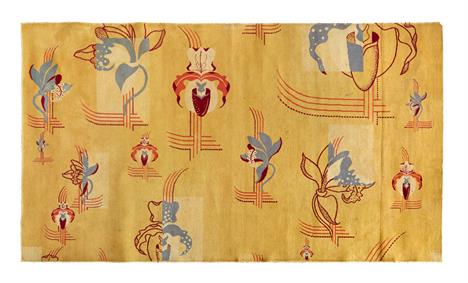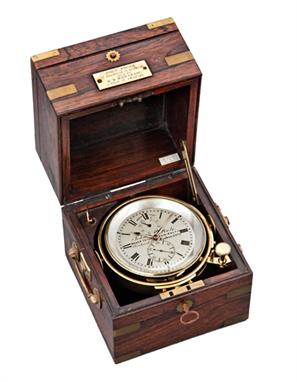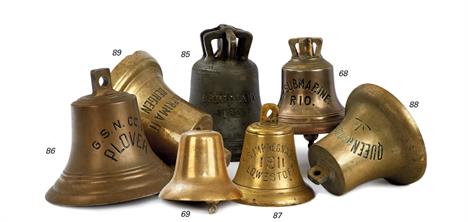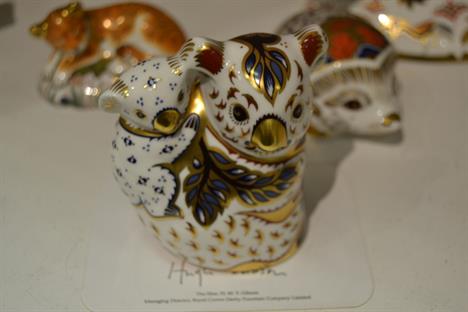We found 596772 price guide item(s) matching your search
There are 596772 lots that match your search criteria. Subscribe now to get instant access to the full price guide service.
Click here to subscribe- List
- Grid
-
596772 item(s)/page
Bob Dylan, Wonderlands Records Group Bootlegs including In His First New York Concert CD/DVD (7)Broadside, Ballads and Blues - March - October 1962 How Does It Feel...50 Years On The Road The Wild and Rambling Boy 1961-62 First New York Concert November 4 1961 From Minnesota to New York 1958-61 The European Tour 2009 Positively West 52nd Street Roseland Ballroom New York, October 19/20, 1994
Seven cast & crew baseball caps, 1 x Hogwarts, 2x Transport Dept, 2 x Crew & 2 x Stunts Worldwide, (all Chamber of Secrets) (7) Provenance: Part of the Felicity Walker collection Felicity Walker was the Double for Emma Watson (Hermione Granger) in the first three Harry Potter films, The Philosopher`s Stone, The Chamber of Secrets & The Prisoner of Azkaban.
Harry Potter and the Chamber of Secrets, Deluxe first edition hardback book, signed to inside pages by cast including Daniel Radcliffe, Emma Watson, Rupert Grint, Matthew Lewis, Helen Stuart, Eleanor Columbus, Jamie Waylett, Tom Felton, Edward Randall, Devon Murray, James Phelps, Oliver Phelps, Hugh Mitchell, Luke Youngblood, Bonnie Wright, Chris Rankin, Harry Melling & others (23 signatures) Provenance: Part of the Felicity Walker collection
Harry Potter and the Prisoner of Azkaban, deluxe hardback first edition book signed by the cast including Daniel Radcliffe, Emma Watson, Rupert Grint, James Phelps, Oliver Phelps, Alfred Enoch, Sitara Shah, Jennifer Smith, Michael Gambon, Harry Melling, Devon Murray, Alan Rickman, Bronson Webb, Tom Felton, David Thewlis, Jamie Waylett, Matthew Lewis, Emma Thompson, Robbie Coltrane, Peter Best, Alfonso Cuarón (Director) & others (31 signatures) Provenance: Part of the Felicity Walker collection
SIR THOMAS LIPTON’S FAMOUS STEAM YACHT ERIN, a Royal Doulton white dinner plate, with scalloped edge decorated in gold and the rim bearing the crossed coloured flags of the Royal Ulster Yacht Club and Lipton’s celebrated yacht(s) Shamrock above S.Y. Erin on a scroll -- 10in. (25.5cm.) diameter, The steam yacht Erin was purchased in 1898 by Sir Thomas Lipton, one of the early twentieth century’s most determined yachtsmen and the dominant personality in the tea industry, two years after she was launched under her original name of Aegusa. Rigged as a screw schooner, she was registered at 451½ tons net and measured 264½ feet in length with a 31½ foot beam. Powered by a triple-expansion engine fired from two Scotch boilers, she was both fast and elegant and, having once passed into Lipton’s ownership, soon became one of the most well-known steam yachts on both sides of the Atlantic. Lipton’s great passion was to win the America’s Cup and Erin served as his floating base for his unsuccessful challenges in 1899, 1901 and 1903. En route to the United States for a fourth challenge when war was declared in 1914, she returned home after first being fitted out as a hospital ship. Presented to the Admiralty, who restored her original name as there was an existing Erin in the fleet, she served as a hospital ship in the Mediterranean until torpedoed and sunk in June 1915.
J.D. McLEAN (BRITISH, 19TH-CENTURY), “Alexandra” in gale, January 9th 1882, Malta to Corfu, Signed and dated ‘J.D. McLean ‘82’ (lower right); and inscribed as per title on old stretcher, 15½ x 19¾in. (39.5 x 50cm.), Built at Chatham and commissioned at Flagship Mediterranean in 1877, Alexandra (named after the new Princess of Wales) was the last ship to mount full broadside armament below deck, and the first to deploy high-pressure cylindrical boilers which drove her 9,490 tons equipped with 21-foot screws to 14.5 knots - the fastest warship in the world at the time. In 1891 she became flagship to the R.N. reserve at Portsmouth, then a mechanical training ship in 1903 and was sold in 1908.
JOHN POOLE ROSEWOOD 2-DAY MARINE CHRONOMETER WITH POOLE’S AUXILLIARY COMPENSATION BALANCE, NO. 2972, CIRCA 1860, the 3½in. silvered dial signed John Poole, Maker To The Admiralty, 57 Fenchurch St., London, 2972, champlevé Roman numerals, subsidiary seconds and up-and-down dials, gold hour and minute hands, movement punch-numbered on the pillar plate, fusee and chain, Harrison’s maintaining power, Earnshaw-type footed spring detent escapement, bimetallic compensation balance with cylindrical temperature weights and meantime adjustment nuts, Poole’s auxiliary compensation, diamond endstone, free-sprung blued-steel helical balance spring, punch-numbered gimbal-mounted brass bowl in three-tier brass-bound rosewood box with bone signature plaque also inscribed sold by B.R. Hennessy, 5, Wind St., Swansea -- 6½ x 7in. (16.5cm x 18cm.) square approx., John Poole (1818-1867): Poole worked in premises at 57 Fenchurch Street between 1858 and 1885, he was one of the great makers who established himself as a chronometer maker in 1840. He is perhaps most famous for his auxiliary compensation which was first applied in 1850, of which the present chronometer is a fine example. Poole’s auxiliary was commercially successful being easy to make, it acts only in the cold (the reverse of Molyneux’s).
ONESIME DUMAS, MAHOGANY FRENCH 2-DAY MARINE CHRONOMETER, NO. 1034, CIRCA 1870, the 3½in. silvered dial signed O. Dumas a St. Nicolas, Pres Dieppe, No. 1034, champlevé Roman numerals, subsidiary seconds and up-and-down sector, gilt hour and minute hands, movement with reverse fusee and chain, Harrison’s maintaining power, Earnshaw-type footed spring detent escapement, “Z-type” bimetallic compensation balance with adjustable cylindrical temperature weights and meantime adjustment nuts, diamond endstone, free-sprung blued-steel helical balance spring, gimbal-mounted brass bowl, screw-down brass bezel, in three-tier mahogany box with brass drop handles, bone signature disc -- 6½in. (16.5cm.) square approx., Onésime Dumas (1824-1889). A chronometer-maker and nephew of Henri Motel, he was an apprentice first of Perrelet and then of Charles-Auguste Berthoud. After having worked for a short period with Motel, he succeeded Gannery at St. Nicolas d’Aliermont. He exhibited precision horology at Rouen in 1856 and chronometers at Paris in 1857. He was the first maker in France to produce chronometers of English caliber.
THE BATTLE OF SOLEBAY: 28TH OF MAY 1672, a series of papers relating to the Battle of Solebay, the first battle of the 3rd Anglo-Dutch War, near Southwold in Suffolk, where a fleet of 75 Dutch ships under Admiral de Ruyter surprised the joint Anglo-French fleet. After fierce fighting and losses, both sides claimed the victory -- 24in. of Column Space, in four complete and genuine issues of THE LONDON GAZETTE, dated May 27th, 30th, and June 3rd and 6th, 1672 (4)
AN 18TH-CENTURY BRASS RULE BY BENJAMIN COLE, LONDON, divided on one side over 12in. between 0-36 and signed as per title to top; together with another, similar, signed James Gargory and stamped TC with crown over, (2), Either Benjamin Cole (I) 1720-1750 or Benjamin Cole (II) 1766-1782 could be responsible for the first instrument; James Gargory is recorded as working between 1835 and 1862 from Bull Street, Birmingham
A 1:48 SCALE ADMIRALTY DOCKYARD OR NAVY BOARD MODEL FOR AN UNIDENTIFIED TWO-MASTED 8-GUN VESSEL OF CIRCA 1720, constructed in boxwood with exposed frames below ebonised wales and scored planking with trenails over, tapering rudder, chain plates with deadeyes, Venetian Red gun port lids, swivel gun mounts, finely carved figurehead in the form of Neptune, delicately painted eggshell blue scrollwork bulwarks and catheads with sheaths, carved quarter badges and stern, semi-open decks with fittings including belaying rail with pins, windlass, capstan, covered hatches, cleats, bilge pumps, poop rail and companionways, great cabin with compass rose parquetry floor, and keel with mast steps etc., mounted on two wooden balustrades with tapered steel side supports within late 19th-Century glazed display case with mirrored back and side panels (missing taffrail, part of the head and head rails, loose companionway and knee within, dust and wear; cases back mirror broken). Model overall -- 6 x 22in. (15 x 56); Case -- 11 x 26 x 7½in. (28 x 66 x 19cm.), Provenance: English private owners from the first half 19th-Century and thence by descent. This model enjoys several distinctive features which suggest it is probably a unique example. Apparently unlisted and of a hybrid design, it is possible that it was built as a private commission for an important official, either as a proposal or one that was intended for private use. The most immediately distinctive feature is the delicately-carved figurehead of Neptune - all the known “Neptunes” are large ships of the line and not small craft. It is thought that the Admiralty were beginning to experiment with character heads on small 5th and 6th Rates around 1720 so it is not impossible to extend that to an 8-gun vessel; alternatively, were this a proposal model it would seem probable that a simple billet head, or perhaps the usual Lion, would be used, that it’s a character head on such a small craft is rare. It is possible that this hybrid design might have been considered for a small class -- an early “Neptune” class perhaps, but which remained a proposal (latterly there was a “Neptune” class of 1st Rates built from 1790); alternatively, if it represents a one-off commission for a wealthy naval dignitary, it may incorporate part of his Grant of Arms. The distribution of the gun ports is also unusual - six in the stern and two forwards providing for a very long deck with shallow bulwarks (often associated with bomb ketches) and, most unusually, a capstan and windlass almost side-by-side. The mast distribution suggests it may have been rigged as a snow and, with a comparatively shallow draft carrying a large sail area, it should have been a fast sailer - ideal for ferrying the new Hanoverian monarchs’ officials over the English Channel and North Sea perhaps? The loss of the taffrail carvings in the late 19th-Century is a great shame as these may have held additional clues, and it is thought that after suffering this accident it was placed in the overly-tight case.
H.M. ROYAL YACHT OPHIR (1901), an impressive ship’s badge, removed from one of the two 32-foot steam cutters carried aboard Ophir during her royal tenure, the oval copper plate depicting the yacht’s distinctive device of a Tudor rose within a royal garter engraved Honi Soit Qui Mal Y Pense and laid upon the stock of a crowned anchor, with rope-twist border -- 12½ x 9½in. (32 x 24cm.), mounted on a wooden oval for display, an interesting relic of the rare charter of a commercial vessel for royal duty; together with a printed copy of the illustrated mss. journal of Petty Officer Harry Price, RN, entitled The Royal Tour, 1901, or the Cruise of H.M.S. Ophir, publ. by Webb & Bower, Exeter, 1980 (2). Ophir was a highly distinctive twin-screw steamer ordered for the Orient Line’s prestigious Australian service in 1891. Built by Robert Napier & Sons at Glasgow, she was registered at 6,814 tons gross (2,920 net) and measured 465 feet in length with a 53½ foot beam. Powered by two of her builder’s own triple-expansion engines she could make 18 knots at full speed and, whilst she had passenger accommodation in three classes, her first class public rooms were particularly lavish. In fact, so luxurious were her appointments that she proved a logical choice when the government found it necessary to charter a suitable liner to convey the Duke and Duchess of York (later King George V and Queen Mary) on their overseas tour in 1901. After minor modifications, including the positioning of two 32-foot steam cutters over the poop, and thereafter repainted in her new white livery, Ophir left Portsmouth on 16th March 1901 for the first-ever Royal Tour in the modern sense. Every continent in the Empire was visited except India, and by the end of the seven-month voyage, she had steamed 45,000 miles. Returning to commercial sailings the following year, her royal connection made her even more popular with the travelling public although her running costs were so high that she was frequently laid up during the low season. Serving as an armed merchant cruiser during the Great War, she was paid off for the last time in 1919 and broken up in 1922.
ROYAL YACHT SERVING PLATE OFF ROYAL GEORGE, 1817, an oval creamware serving plate, by Sharpus & Co., Cockspur Street, London, blue and white transfer printed decoration with gilded and scalloped edge, the plain white centre bearing the Prince of Wales’ feathers within a crowned royal garter -- 12in. wide x 9½in. high (30.5 x 24cm.), Apparently produced for the wardroom of the Royal George, the royal yacht most used by George IV when he was Prince Regent (1811-20). Named for the Prince, the future George IV, rather than his father, the ailing George III, the Royal George was built at Deptford in 1817 and bore all the hallmarks of the Regent’s flamboyant taste. Carrying a full ship-rig on her three masts, she was measured at 330 tons burden and was 103 feet long on her main deck with a 26½ foot beam. Luxuriously fitted out in a manner befitting her status, she attracted much attention - “The vessel is the most elegant ever seen” wrote a contemporary observer “….with gilt mouldings and the windows of plate-glass. Ornamental devices in abundance……producing a superb appearance.”, After a remarkably colourful career during three reigns, Royal George’s life as a working yacht came to an end in 1843, following the completion of the first royal steam yacht Victoria & Albert I. Thereafter relegated to the role of an accommodation ship for officers and men of the Royal Yacht flotilla and based at Portsmouth, she survived, astonishingly, until 1905 when she was finally broken up.
A SOUVENIR ‘JOLLY ROGER’ FROM H.M. SUBMARINE UTMOST, CIRCA 1942, the black cotton field with skull and crossbones flanked by success emblems duplicated both sides -- 25 x 29in. (63.5 x 73.5cm.), Provenance: T.W. Lilley, Acting Leading Stoker aboard Utmost 1940-1942, and thence by descent., Launched by Vickers Armstrong in April 1940 and commissioned that August, once some initial teething troubles had been resolved, Utmost quickly proved herself as one of the RN’s more effective submarines. As her ‘Jolly Roger’ testifies, in her brief career she sank seven Axis merchantmen, damaged three and also damaged the Italian Cruiser Trieste. She was returning to Malta in November 1942 from a successful patrol when she was located and sunk by the Italian torpedo boat Groppo with the loss of all hands., Thomas William Lilley (1916-1974) joined Utmost as his first submarine. He remained aboard until April 1942 when he was sent ashore for a Petty Officers’ course. It seems this Jolly Roger was made by the signalman and presented to him on his departure. Two other souvenir examples from Utmost are held at the Royal Navy Museum, Gosport., Officially frowned on, the Jolly Roger was universally taken up by submariners of all nations who had been “slandered” as Pirates by Sir Arthur Wilson, First Sea Lord in World War One, who stated that submarines were “underhanded, unfair, and damned un-English”, and that he would convince the Admiralty to have the crews of enemy submarines captured during wartime hanged as pirates. Consequently they were flown by returning crews to list their “kills”: the horizontal bars represent torpedo strikes - white for merchant and red for naval; the swords are for involvement in Special Forces Operations (dropping/collecting agents); the star for a target destroyed by gunfire, and the life buoy for rescuing a downed air crew.
ALARM BELL FROM GERMAN SUBMARINE U-111, a brass bell with clapper, stipple engraved Alarm Bell Taken From German Submarine U-111 -- 6in. high (15cm.), U-111 was one of the ‘U-93’ class of submarines, the first batch of which was ordered from Germaniawerft at Kiel in May 1916. Displacing 808 tons (surfaced) and 946 tons (submerged), all vessels in the class measured 235 feet in length with a 21 foot beam and could make almost 17 knots at full power when above the waves. Well-armed with six torpedo tubes (4 bow & 2 stern) and deck guns fore and aft, each carried a complement of 39 officers and men. U-111 herself was launched on 5th September 1917 and was completed for sea early in January 1918. Despite her brief wartime career operating solely in the Irish Sea and the ‘Western Approaches’, she sank two allied steamers on her first patrol (26 March - 23 April) and at least one other on her second cruise (27 May - 24 June). Hampered by British anti-submarine patrols in the Irish Sea on her third patrol (25 August-29 September), she obtained no further sinkings and surrendered herself at Harwich, after the Armistice, on 20th November 1918. One of the six U-boats handed over to the Americans as war reparations, all of which were towed to the USA and then sunk as targets, U-111 also held the curious distinction of being the only German U-boat of the Great War (out of the total of 139 completed) to number a clergyman among her crew, Marinepfarrer Wilhelm Meinhold., (Illustration on page 31)
-
596772 item(s)/page




























































